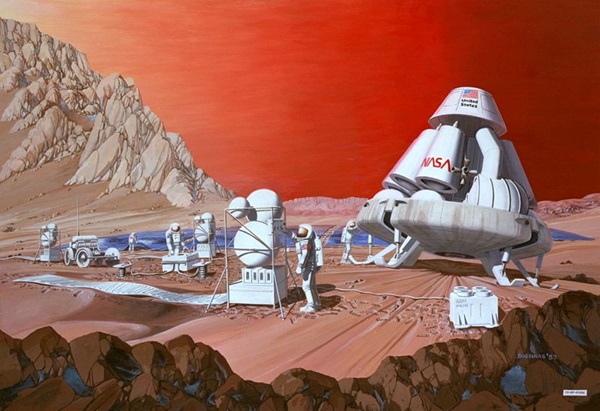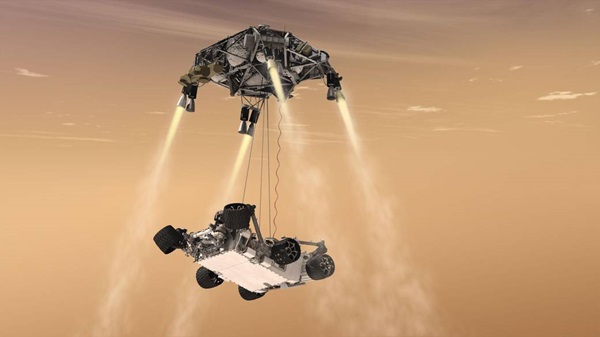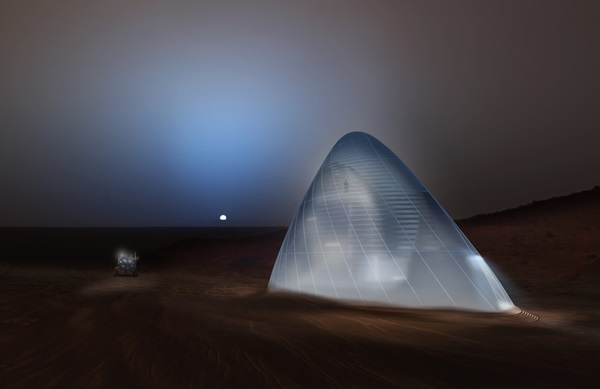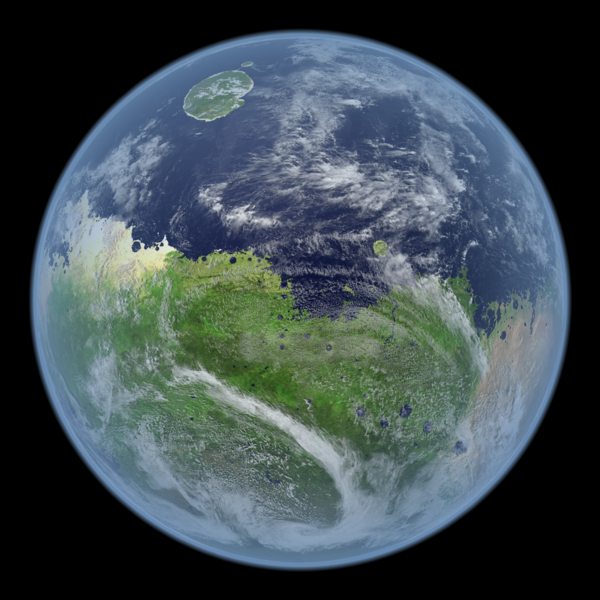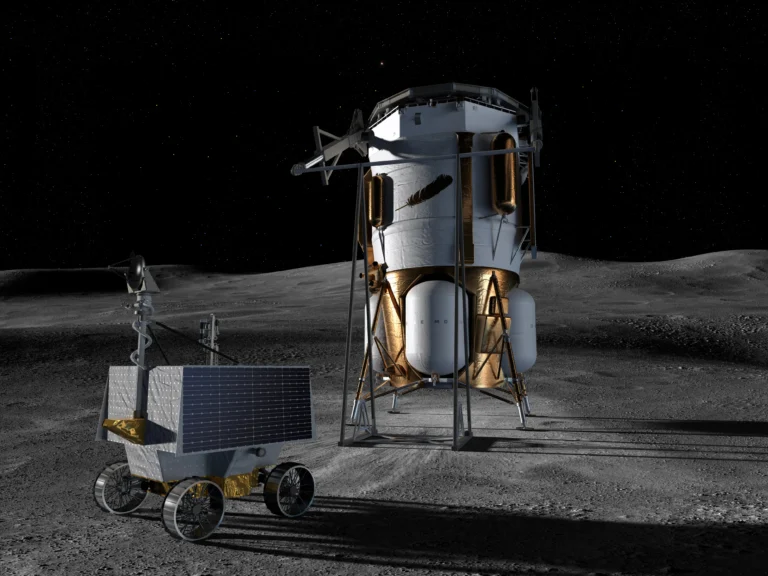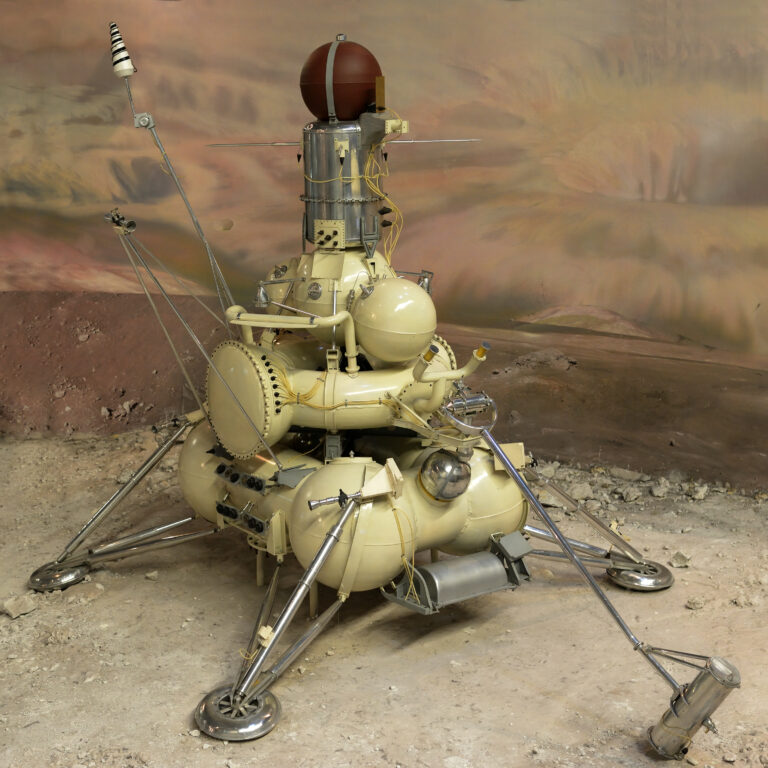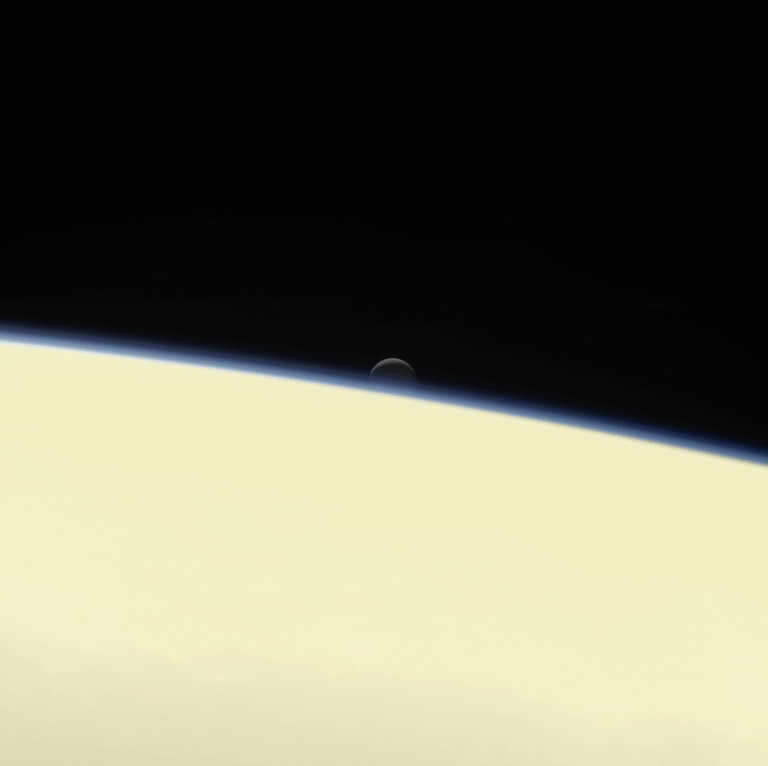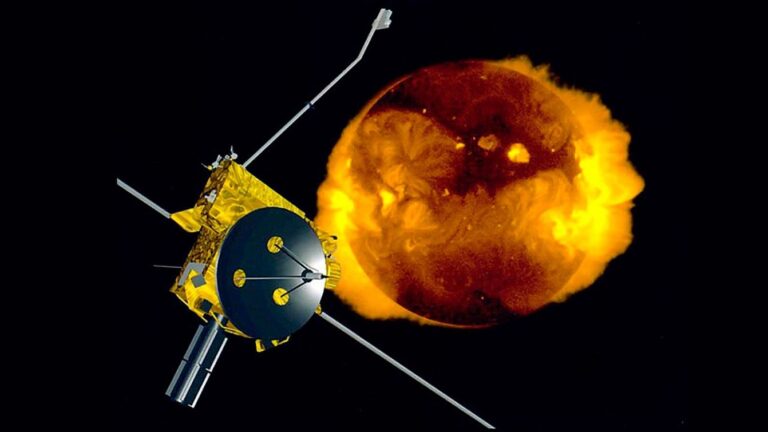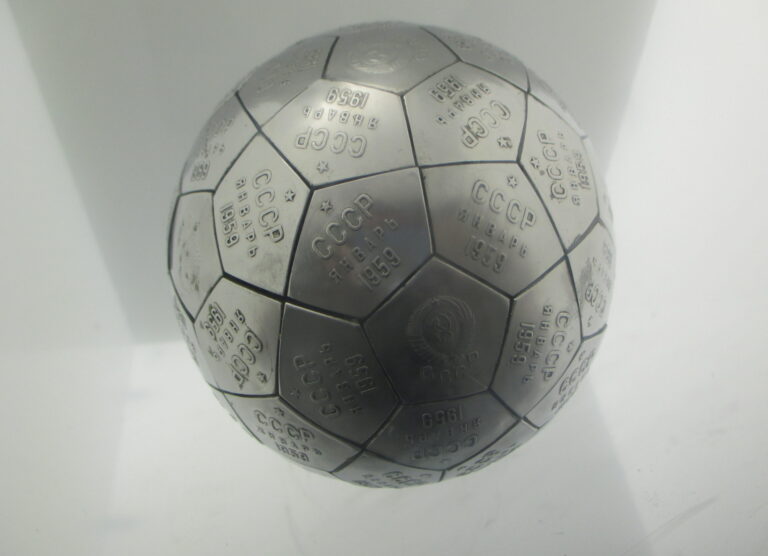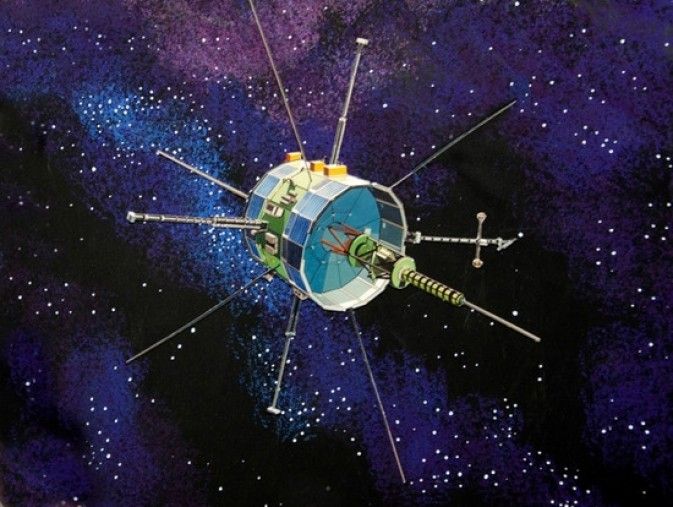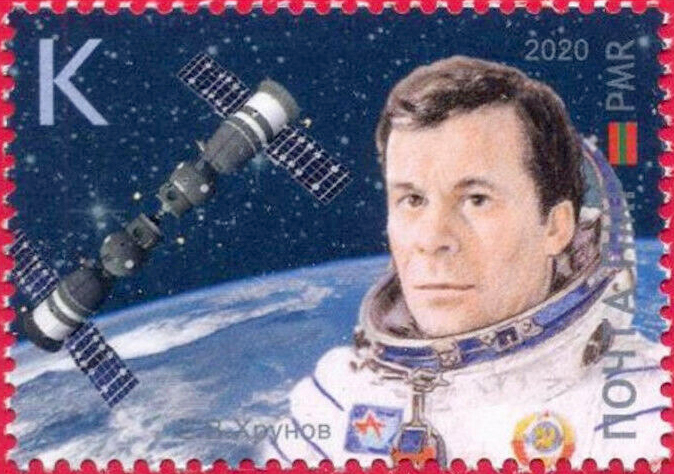Key Takeaways:
- NASA's Mars human landing mission faces significant technological challenges, including the need for supersonic retro-propulsion to land a projected 20-metric-ton spacecraft, rendering previous landing systems (airbags, sky cranes, parachutes) insufficient.
- Planned Martian habitats will require robust life support systems (ECLSS), power systems, and docking ports, informed by lessons learned from the International Space Station, and will necessitate significantly more living space per crewmember compared to shorter-duration missions.
- Self-sustaining food production on Mars presents challenges due to the thin atmosphere and reduced sunlight; however, artificial leaves utilizing photocatalysis offer a potential solution for producing medicine and other essential compounds.
- Initial Mars colonization will focus on establishing a self-sufficient base, with farming implemented later using Martian regolith (after detoxification) and water from polar ice caps; early Martian greenhouses will utilize the planet's carbon dioxide atmosphere to facilitate plant growth, minimizing the need for Earth-like atmospheric pressure.
It seems like everyone has Mars on the mind these days. NASA wants to send humans to the red planet by 2030, and SpaceX wants to get there even sooner, with plans to have people there by 2024.
Mars is a favorite theme in Hollywood, with movies like The Martian and this year’s Life exploring what we might find once we finally reach our celestial neighbor, but most of them aren’t addressing the biggest questions — once we get there, how will we survive long-term?
The atmosphere of Mars is mostly carbon dioxide, the surface of the planet is too cold to sustain human life, and the planet’s gravity is a mere 38% of Earth’s. Plus, the atmosphere on Mars is equivalent to about 1% of the Earth’s atmosphere at sea level. That makes getting to the surface tricky. How will NASA get there? How can we hope to survive against such odds?
Landing Ideas: Then and Now
Traveling to Mars is just the first leg of the journey — when Earth and Mars are closest to each other, the trip will take a mere 260 days. Once we get there, the challenge becomes landing on the planet’s surface. What type of landing system will get our astronauts and colonists safely to the surface?
Back in 2007, scientists considered four possible solutions to get astronauts to the surface. One idea was a Legged Landing System based off the Lunar Lander. This system could provide the option to both land and take off from the red planet. Secondly, the SLS System, or Sky-Crane Landing System, would use population systems to lower rovers and other equipment onto the surface. This system can unload cargo and take off again. The third design discussed was an Air Bag Landing System, which would rely on a rocket that cuts its thrust above the surface of the planet as well as an air bag for the equipment to land on. However, this wouldn’t be the best option for people. Lastly, scientists considered Touchdown Sensing. Equipment senses the surface and the landing site, and compensates accordingly.
Ten years later, scientists have other ideas on how to land manned missions to Mars. According to Richard (Rick) McGuire Davis, Jr., Assistant Director for Science and Exploration and co-leader of the Mars Human Landing Sites Study at NASA, “landers will have to dive deep into the Martian atmosphere and skirt closer to the surface than we have done in the past… [since] the Martian atmosphere is thickest near the surface.” When asked about the previous methods of technology mentioned above he said, “The lander is so heavy that many technologies will not work, such as airbags, sky-cranes and parachutes. In fact, to slow down, we will be heavily reliant on jets.” How heavy will the crewed missions be? This supersonic retro-propulsion technology is required to be able to deliver the “projected 20 metric ton” spacecraft to the surface of Mars. For comparison, the Curiosity rover was only 1 metric ton.
Once we make it to Mars, what comes next?

What would it take to settle the Red Planet? Check out our free downloadable eBook: Martian Homes and Gardens: Your Handbook for Settling Mars.
Habitation Built to Last
NASA is already considering what kind of habitation we’ll need to survive on the surface of Mars. Six companies began designing possible habitat prototypes in 2016, with completed prototypes expected in 24 months.
All these habitats will likely have a few things in common — they have to be self-sustaining, sealed against the thin atmosphere, and capable of supporting life for extended periods without support from Earth. To get an idea for what to expect, think about the ISS. “The International Space Station has really taught us a tremendous amount of what is needed in a deep space habitat,” said Davis. “We’ll need things like environmental control and life support systems (ECLSS), power systems, docking ports, [and] air locks so that crew can perform space walks to repair things that break or to add new capabilities.” Expect big robust equipment to travel across the stars to Mars during the first manned mission. Whatever the astronauts use must be up for the long journey.
Davis also posed an interesting question: how much space is needed for each crewmember? Could you imagine spending months in one location, surrounded by the same walls day in and day out? How far apart would they have to be to keep claustrophobia at bay? “In the days of the Space Shuttle, missions ran for 7-15 days, and there was not a lot of space for each crewmember. In a space station, where crewmembers are onboard for a much longer time (typically 6 months), we have found that crewmembers simply need more space.” Based on this logic, it’s possible that habitable bases on Mars will require more square footage for inhabitants.
Science fiction also does a great job helping the public imagine what this future mission will look like. The recent film The Martian, portrayed the kind of habitats NASA is investigating for a Mars. Nine pieces of technology showcased in the movie are accurate to the kind of equipment astronauts on the planet will use.
Growth
Keeping the food and medicine supplies stocked on Mars is the best way to make a habitat self-sustaining, but with a thin atmosphere and reduced sunlight, it can be difficult to get anything to grow. Artificial leaves, designed to work in harsh conditions, could offer a solution for first aid.
These leaves, made of silicone rubber, can take a little bit of sunlight and turn it into enough power to fuel the necessary chemical reactions to make medicine and other compounds. Lead researcher Tim Noel, assistant professor at Eindhoven University of Technology said, “[The] device harvests solar energy and re-emits it to a wavelength region which is useful for the chemistry within the channels. [It has the ability to make the] reaction conditions…uniform wherever you are.”
In other words, it can use sunlight during the day on Mars, even though it is potentially exposed to more harmful UV rays. The channels inside the leaf are protected because your device can re-emit the energy it collects at a safer wavelength, which allows any chemical processes to take place. “This could be helpful when the irradiation on a certain planet is too energetic. [Since] light is basically everywhere … [theoretically] you can use that energy to start making the required molecules, whether they are pharmaceuticals, agrochemcials or solar fuels.”
Right now, methylene blue is being used as the photocatalyst to produce drugs. A catalyst’s job is to speed up a reaction, so the methylene blue allows the scientists to produce drugs faster than they could without it. Tim and his team are working hard now to make a diverse set of reactors. They hope to have the device onboard for the trip to Mars. Nature has given us the perfect tools to survive nearly anywhere. They just need a little bit of tweaking to survive off Earth.
Terraforming: It Won’t Be Quite Like the Movies at First
When you think of astronauts on Mars, what comes to mind? Did you picture a red planet turning green with time and continued human colonization? Unfortunately, those days are far in the future, if they even happen at all. During the interview, Davis explained, “Terraforming has a connotation of humans making another planetary body, like Mars, Earth-like. But really, it’s about humans changing their environment to make it more supportive of our need.” What does this mean?
The first few trips to Mars will only include the essentials. One of NASA’s first goals for its astronauts is to learn how to live on the planet. Since it differs greatly from Earth, survival is an important skill for astronauts to master. “The initial base will probably include a habitat and a science lab. [The inside of] these modules will be much like the space station, but there will be differences.” One example Davis gave included preventing toxic dust from getting into the habitat and lab. Microbial life is another threat to astronauts. Without more research on the planet, NASA can’t say for certain what dangers could threaten human life. With this in mind, all scientists involved with the Mars mission will take these and other potential risks under consideration.
After the NASA base is well established and the astronauts learned survival basics, things get more interesting. “Eventually, since it costs so much to send things from Earth, we will want to farm on Mars. Such a farm will really be green houses to protect the plants against the challenging Martian environment,” said Davis. Keep in mind the Martian soil isn’t like the soil on Earth. It lacks organics “[the] rotting biological materials that plants need.” Fortunately, it contains the minerals they require. Davis said that his team calls this soil regolith and it will need to be cleansed of some toxic materials. And NASA scientists can get the job done.
Detoxified soil isn’t the only thing astronauts will need to grow plants. They’ll also need to utilize the water from Mar’s ice-capped poles. Davis said, “Many anticipate that the first human base will be located adjacent to these billion-year-old ice deposits, so that humans can easily produce the volumes of water that they will need to support water intensive activities like farming.” As of yet there is no word about which pole will be more beneficial, if there’s a difference at all.
Before speaking to Davis, I believed that future Martian farms would be equivalent to greenhouses here on Earth. It seemed logical. That’s how people control plant growth here. However, while the plants will need a higher pressure to grow, the plants “[don’t] have to be [at] an Earth-like pressure. In fact, we can pressurize the greenhouse with carbon dioxide, which is the main component of the Martian atmosphere.” This sounds like a win-win for both the scientists and the plants. Instead of the astronauts having to wear cumbersome space suits, they could “just wear lightweight oxygen masks” in the greenhouses. The key takeaway is that the planet doesn’t have to transform into Earth2.0. Maybe one day it will, but for the time being, it just has to function for NASA scientists to live and work.
Time Will Tell
Mars has captured the imagination of humans for decades. These plans are just the next step in the process of getting the Mars Mission from the ‘drawing room floor’ to a funded mission with a launch date. NASA isn’t the only ones with their eyes on Mars. Others are already coming up with their own plans for the red planet. Scientists and enthusiasts have speculated on everything from nuking the planet into habitability to creating a magnetic shield around the planet to encourage it to ‘grow’ its own atmosphere.
Mars is hopefully just our first step into the universe. Once we’ve dipped our toes out into the solar system, it will be easier to expand out into the asteroid belt and beyond. Mars’ low gravity provides the perfect platform for constructing and launching other deep space vehicles. After we’ve got that foothold, the only thing holding us back is our technology. As it is technology is the Achilles heel of the mission now. We might have a way to get to Mars before we have a means of safe exploration.
Those of us who have grown up watching the Apollo missions, space shuttles take-off and now the Falcon rockets climbing through the atmosphere likely won’t see Mars colonized in our lifetimes, but that doesn’t negate the wonder we all feel every time one of those rockets soars into the sky. It’s not just a rocket, but a source of inspiration for generations to come – one of which will step foot on Martian soil.
Megan Ray Nichols is a freelance science writer and the editor of Schooled By Science. When she isn’t writing, Megan enjoys hiking, swimming and going to the movies. She invites you to follow her on LinkedIn and subscribe to her blog here.

Are you ready to take a closer look at Mars? Check out our free downloadable eBook: Mars: Exploring the Red Planet.

